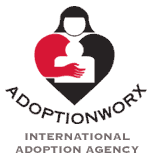|
ALBANIA\\'S CHILDREN & PHOTO GALLERY
Compared to many countries, Albania\\'s number of waiting children is small. Each intercountry adoption agency receives under 10 children per year, as general rule. Families in Albania are encouraged to keep their children, and only relinquish them in exceptional economic, family or social circumstances. There are approximately 10 orphanages in Albania; each one having only 12-40 children residing there.
As a result, the caregiver to child ratio is very favourable. It can range from 1:3 to 1:7. Children receive considerable attention, and displays of affection are commonplace. A primary caregiver is typically the norm, as the staff at each of the orphanages understands that this promotes attachment and corresponding development. It is not the case that are children left unattended to because of insufficient staff or large numbers of children residing there. Caregivers are able to spend time with each child, and the results are evident in the children\\\'s emotional, physical and social development. Several, but not all, of the orphanages receive humanitarian aid in the form of volunteers from England, France and the United States. However, aid from all adoptive parents from Canada is also welcomed. All of this translates to the giving of better care, for children who have lived in an orphanage.
The children that we request are generally healthy. Some children may have minor health issues that are acceptable to you, i.e. strabismus, allergies, asthma, webbed toes, or a benign heart murmur. The age of the children referred to Adoptionworx Canada, at the time of referral, are in the 26-46 month range.
Note: Parents will be referred a child from a variety of culturally and racially diverse backgrounds. Slightly older children (ages 4-5) may be referred to adoptive applicants who are at the higher end of the eligibility age range indicated. Parents may not indicate a specific age within the range. Adoptive parents may not specify gender preference in their application to Albania.
Families are encouraged to educate themselves, have realistic expectations, and read extensively about children whose beginnings have been in a group setting or orphanage. Bear in mind that these children do not start their lives in an intact, family setting. The caregivers actively attend to the care of their children, to the best of their ability. Education starts later, as elementary school begins at age 5 1/2 - 6 years of age, later than North American programs.
Adoption education and the understanding of potential effects of early institutionalization are critical. However, our adoptive parents have reported that they were very pleased by what they observed in the way of emotional care offered at the various orphanages, and the corresponding development of their child. You can read about their experiences in our section, "We\\'re home! -Family Testimonials".
|



